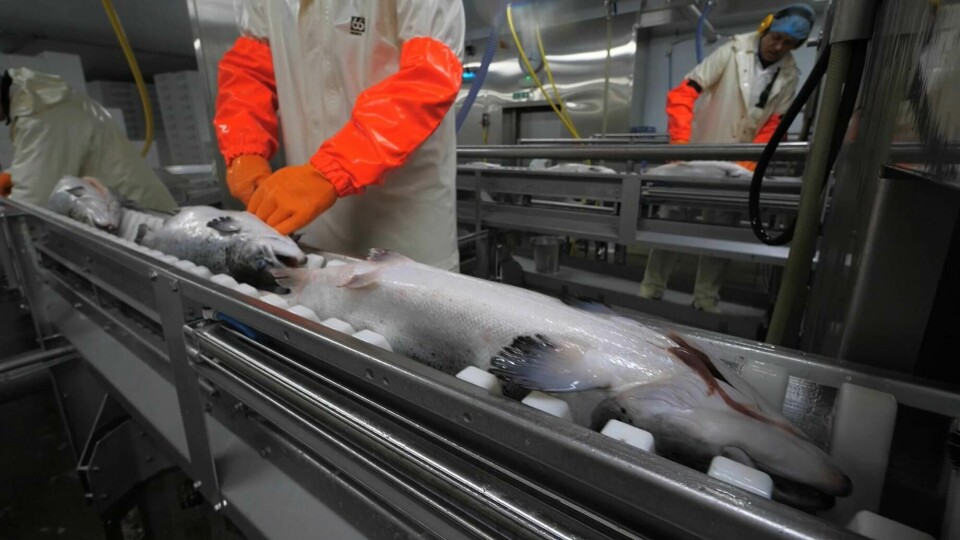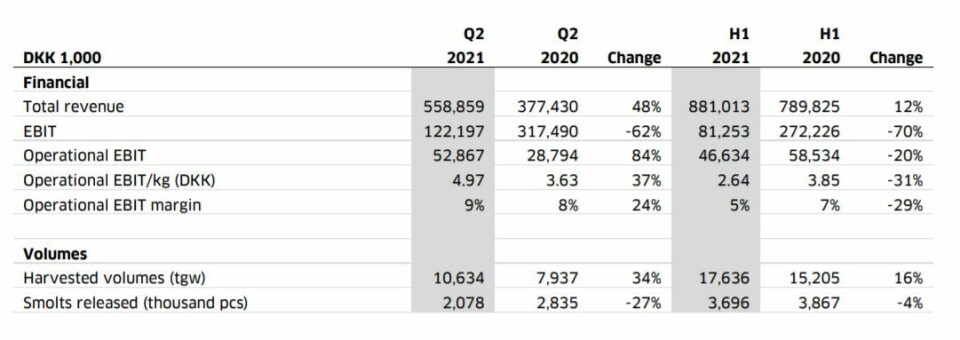
Scottish Salmon Company increases harvest and earnings in Q2
The Scottish Salmon Company (SSC) harvested 34% more fish in the second quarter of this year than in the same period last year, and increased operational EBIT per kilo by 37% to DKK 4.97 (£0.57) from DKK 3.63.
Operational EBIT amounted to DKK 52.9 million, 84% higher than in Q2 2020, on a harvest volume of 10,634 gutted weight tonnes (Q2 2020: 7,937 gwt).
SSC harvested 17,636 gwt in the first half of this year, a 16% increase on the same period last year, but a weak first three months means operational EBIT for H1 is DKK 46.6m, 20% less than in H1 2020.
SSC’s Faroese parent company, Bakkafrost, made a profit of DKK 428.1m for Q2, slightly down on the DKK 471.7m made in the same period last year. For H1 2021, the profit was DKK 835.9m, more than double the DKK 323.7m made in H1 2020.

Satisfactory results
“Overall, we are satisfied with the results from this quarter,” said Bakkafrost chief executive Regin Jacobsen in the company’s combined Q2 and H1 report.
“Despite the salmon market still being somewhat hampered by the Covid-19 pandemic, the market was quite strong in the quarter. Especially the US market has been strong and taken increasing volumes of salmon. The global harvest was only 1% up, compared to the same quarter last year. However, inventories have been released resulting in an increase in global supply of nearly 9%, compared to the second quarter last year.
“Looking ahead, the salmon market outlook is tight for the rest of 2021 as well as for H1 2022.”
Bakkafrost harvested 28,200 gwt in Q2, 17,600 gwt in the Faroes and the rest from SSC in Scotland. Harvest volumes for H1 amounted to 49,200 gwt, up from 38,900 gwt in H1 2020. The company expects to harvest 106,000 gwt in 2021, comprising 66,000 gwt from the Faroes and 40,000 gwt from Scotland. That’s a volume increase of more than 20,000 gwt compared to the 85,686 gwt harvested last year.























































